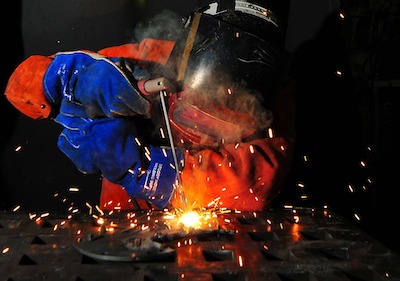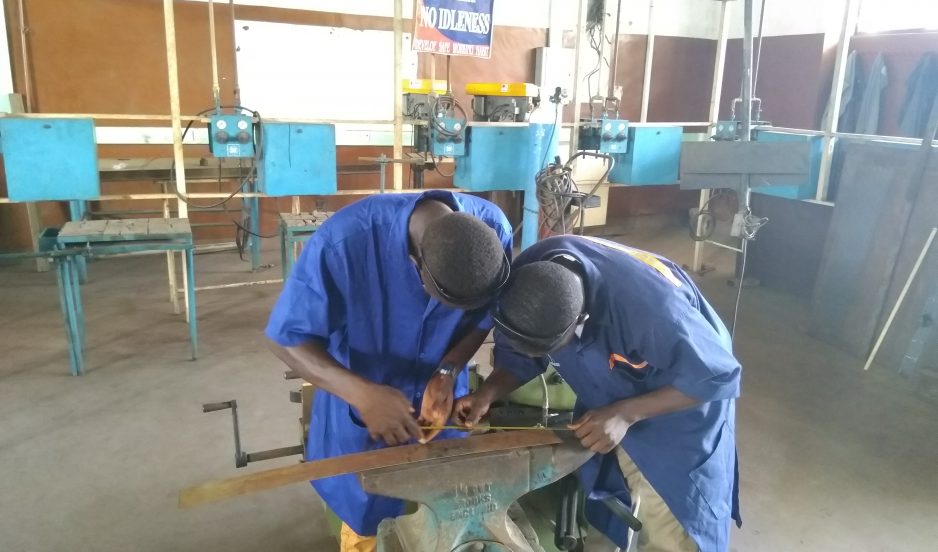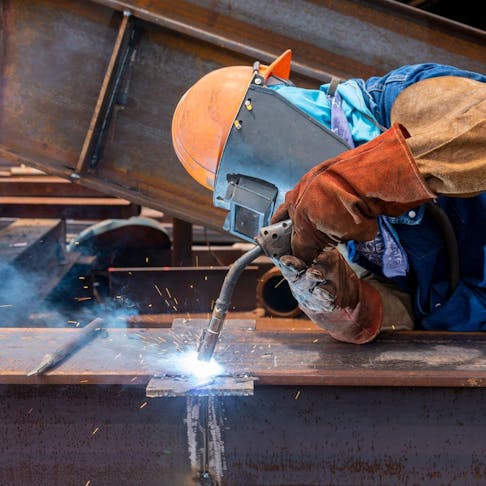Usual Welding Fixing Issues and Exactly How to Address Them Effectively
Welding repairs typically encounter a variety of concerns that can jeopardize the stability of the final product. Typical issues consist of insufficient penetration, porosity, and misalignment, amongst others. Each defect provides distinct challenges that require details approaches for resolution. Comprehending these problems is necessary for welders intending to improve their outcomes and abilities. This conversation will certainly check out these common welding fixing issues and reliable techniques to address them.
Inadequate Infiltration
Insufficient penetration takes place when the weld metal stops working to totally fuse with the base product, resulting in weak joints and potential structural failures. This concern frequently comes from inadequate heat input, wrong electrode angle, or incorrect welding speed. Welders may experience insufficient infiltration as a result of a mistake of the needed criteria for a details product thickness or kind. Furthermore, contamination on the base product's surface area can prevent effective bonding, exacerbating the problem. To resolve insufficient infiltration, welders must ensure ideal settings on their equipment and keep a tidy job surface. Regular assessment of welds is suggested to identify any kind of shortages early, enabling timely improvements and the prevention of endangered architectural integrity in bonded settings up.
Porosity
Porosity is a common flaw in bonded joints that manifests as tiny gas bubbles entraped within the weld steel. This defect can compromise the integrity of the weld, resulting in decreased stamina and potential failing under anxiety. Belgrade Fabrication. Porosity generally occurs from contamination, moisture, or incorrect welding methods, which enable gases to escape into the liquified weld swimming pool. To attend to porosity, welders need to assure correct surface area prep work, maintain a clean workplace, and utilize suitable welding specifications. Additionally, choosing the ideal filler product and shielding gas can alleviate gas entrapment. Routine assessment and screening of welds can assist recognize porosity early, ensuring timely restorative actions are taken, thus preserving the quality and reliability of the bonded framework
Imbalance
Misalignment in welding can emerge from numerous variables, consisting of inappropriate setup and thermal expansion. Understanding the origin is essential for efficient resolution. Several adjustment techniques are readily available to straighten parts and assure architectural honesty.
Reasons for Misalignment
Welding imbalance often stems from a selection of underlying issues that can compromise structural stability. One main reason is incorrect fit-up of components before welding, which can bring about voids and unequal surface areas. Variants in thermal expansion throughout the welding procedure can additionally result in distortion, specifically if the materials being signed up with have different coefficients of expansion. In addition, insufficient fixturing and clamping may fail to hold parts securely in place, leading to activity during welding. Poorly kept equipment, including welding makers and devices, may present variances in the weld grain, further adding to imbalance. Operator error, stemming from inadequate training or experience, can also play a significant duty in producing misaligned welds.

Improvement Techniques Available
Resolving misalignment efficiently needs a mix of corrective methods tailored to the specific concerns handy. One typical technique is using fixtures or jigs to hold elements in the proper setting throughout welding, ensuring constant alignment. In addition, preheating the products can aid minimize distortion and improve fit-up. For substantial misalignment, mechanical adjustment techniques, such as utilizing hydraulic jacks or clamps, can be utilized to remedy the setting before welding. Post-weld warm therapy may likewise be essential to soothe anxieties brought on by imbalance. Mindful assessment and modification throughout the configuration stage can prevent imbalance issues from coming to be significant troubles, promoting a smoother welding procedure and enhancing total structural stability.
Distortion
Distortion is a typical obstacle in welding that can arise from different elements, consisting of unequal heating & cooling. Understanding the reasons of distortion is necessary for applying efficient prevention techniques. Addressing this concern not just boosts architectural honesty but additionally enhances the overall quality of the weld.
Reasons for Distortion
When based on the intense warm of welding, products frequently undergo changes that can result in distortion. This sensation largely arises from thermal growth and tightening throughout the welding procedure. As the weld area warms up, the material broadens; upon air conditioning, it gets, which can develop inner tensions. Additionally, irregular home heating throughout a workpiece can aggravate these stress and anxieties, leading to bending or flexing. The kind of material also plays a significant duty; metals with varying thermal conductivity and coefficients of growth may respond differently, leading to unforeseeable distortions. Additionally, inadequate joint design and inadequate fixturing can add to misalignment throughout welding, raising the likelihood of distortion. Comprehending these reasons is essential for reliable welding fixing and avoidance strategies.
Prevention Techniques
Efficient avoidance strategies for distortion during welding focus on managing warmth input and ensuring proper joint layout. Keeping a regular warmth input assists to reduce thermal development and tightening, which can cause distortion. Using methods such as pre-heating the workpiece can additionally minimize the temperature level slope, promoting uniform heating. Furthermore, picking ideal joint styles, such as T-joints or lap joints, can enhance stability and reduce stress concentrations. Carrying out appropriate fixturing to secure the work surfaces in position better help in keeping placement during the welding procedure. Staggered welding sequences can disperse warm much more equally, avoiding localized distortion. By using these methods, welders can greatly decrease the chance of distortion and improve the total top quality of their welds.
Cracking
Breaking is a typical issue run into in welding fixings, frequently arising from numerous factors such as improper air conditioning prices, product selection, or insufficient joint preparation. The occurrence of splits can greatly jeopardize the integrity of the weld, bring about possible failings during procedure. To address this problem, welders should initially examine the source, guaranteeing that materials work and suitably picked for the certain application. Furthermore, managing the cooling price during the welding procedure is necessary; rapid air conditioning can cause stress and anxiety and lead to fracturing. Proper joint design and preparation additionally add to decreasing the danger. description Applying these techniques can improve weld top quality and resilience, ultimately reducing the probability of splitting in finished weldments.

Incomplete Fusion
A significant concern in welding fixings is insufficient combination, which happens when the weld steel does not properly bond with the base material or previous weld passes - Fabrication. This issue can cause weak points in the joint, possibly compromising the integrity of the welded framework. Variables adding to insufficient blend include not enough warmth input, inappropriate welding strategy, and contamination of the surface areas being joined. To resolve this problem effectively, welders ought to ensure correct pre-weld cleansing and surface area prep work, as well as readjust their welding specifications to attain adequate penetration and blend. Regular assessment during the welding process can likewise assist recognize insufficient blend early, enabling timely restorative steps to improve the overall top quality of the weld
Overheating
While welding repair work can boost structural integrity, overheating offers a considerable obstacle that can cause product degradation. Extreme warm during welding can alter the mechanical buildings of steels, resulting in reduced stamina, boosted brittleness, and bending. This sensation is especially critical in high-stress applications where structural dependability is vital. Determining overheating can include visual inspections for staining or distortion, in addition to keeping an eye on temperature level during the welding procedure. To alleviate the threats related to overheating, welders must use appropriate techniques, such as regulating warm input, changing traveling rate, and using suitable filler materials. In addition, carrying out pre- and post-weld warm therapies can help restore product residential or commercial properties and enhance the total top quality of the repair service, guaranteeing long-term efficiency and safety.
Regularly Asked Concerns
What Are the Typical Signs of a Welding Problem?

Exactly How Can I Check My Welds for Quality?
To evaluate welds for quality, one can utilize visual evaluations, ultrasonic testing, and radiographic techniques. Each strategy assures architectural honesty, determines flaws, and verifies adherence to specified requirements, eventually boosting the dependability of the bonded joints.
What Safety and security Precautions Should I Take While Welding?
When welding, one ought to prioritize safety and security by using proper individual safety tools, making certain proper ventilation, safeguarding combustible materials away, maintaining a clean office, and understanding environments to stop accidents and injuries.
Can I Repair a Weld Without Renovating the Entire Joint?
Repairing a weld without remodeling the entire joint is feasible, depending upon the damages (Montana Mobile Welding and Learn More Here Repair Fabrication). Techniques such as grinding, adding filler material, or making use of a welding process can effectively address specific defects while maintaining the surrounding framework
What Tools Are Necessary for Effective Welding Fixes?
Essential tools for reliable welding fixings include a welding equipment, wire brush, mill, safety gear, clamps, and filler products. Each device plays an important duty in making certain top quality and safety during the repair service process. Porosity normally arises from contamination, wetness, or inappropriate welding techniques, which enable gases to run away right into the liquified weld swimming pool. Badly maintained devices, consisting of welding welding cast aluminum makers and tools, may introduce variances in the weld grain, more contributing to imbalance. When subjected to the intense warmth of welding, materials typically undertake changes that can lead to distortion. Cracking is an usual issue come across in welding repair services, usually resulting from numerous factors such as incorrect air conditioning prices, product selection, or insufficient joint preparation. A considerable concern in welding repairs is incomplete combination, which happens when the weld steel does not properly bond with the base material or previous weld passes.